How it's taken: "Fear and loathing in Las Vegas"
Categories: Cinema
By Pictolic https://pictolic.com/article/how-its-taken-fear-and-loathing-in-las-vegas.htmlTwenty-three years ago, Terry Gilliam sent the audience into a psychedelic trip to the city of sin. Parse, as recreated on the screen dark narcotic experience hunter S. Thompson: "gonzo-directing", the wide-angle optics, the one-eyed operator and the Japanese Jimi Hendrix
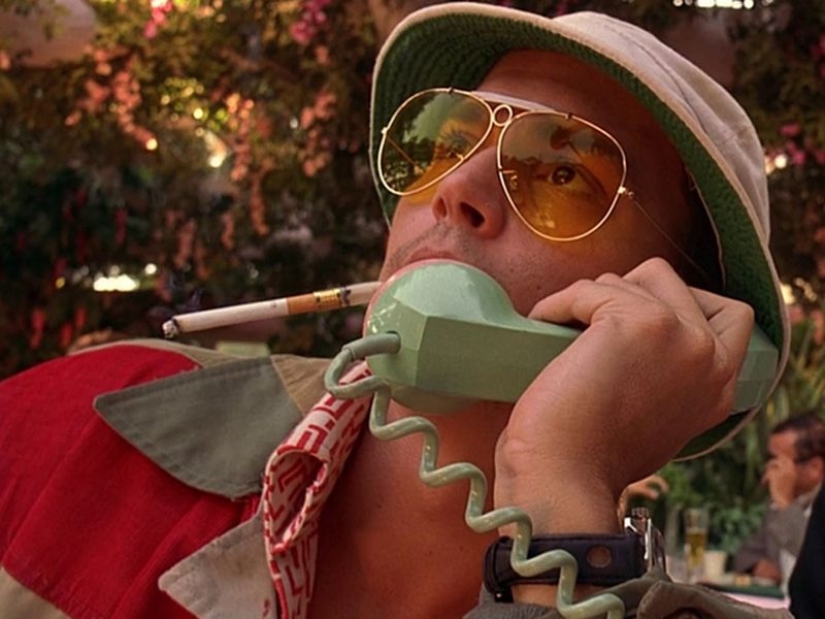
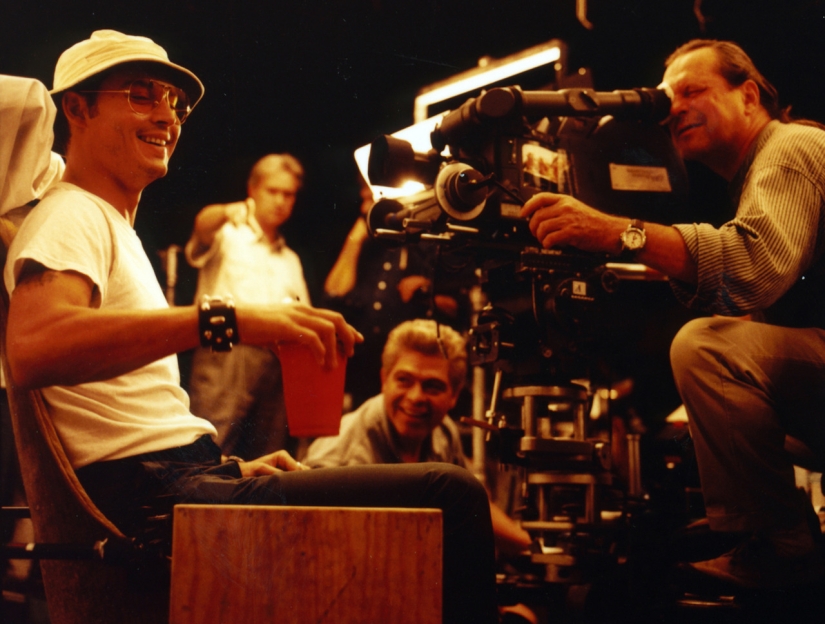
Attempt to film the novel hunter Thompson's "Fear and loathing in Las Vegas" began to be taken almost immediately after the book in the early 1970‑ies. Among the Directors, Brassica to the material was Martin Scorsese and Oliver stone, and candidates for a duet of the main characters managed to get Jack Nicholson and Marlon Brando, Dan Aykroyd and John Belushi, John Malkovich, and John Cusack. However, the actors managed to get out of the right age, or even die, and the project were in place. (It is worth noting that in 1980, for example, came the film "where the Buffalo roam" is based in part on this novel: there's the main role was played by bill Murray. But the picture was taken is cool.)
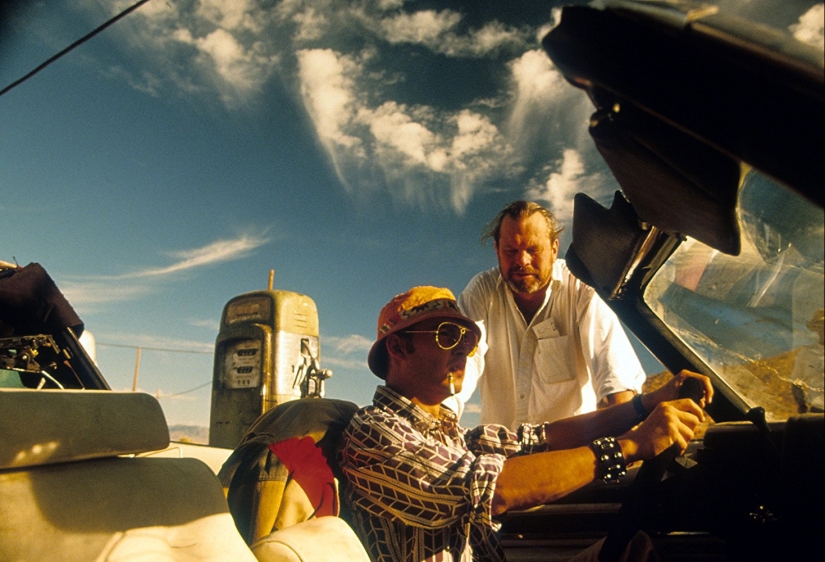
The situation changed only in the early 1990s, when the film production company took Rhino Films. She drew as a Director and scriptwriter Alex Cox. He pledged to make a film in no time and stay within a fairly moderate budget. Soon, however, Cox was fired, and invited Terry Gilliam, who first several times somehow intersect with the project. Together with screenwriter Tony Grisoni it from scratch he wrote the script, and, because time was running out, the text was prepared in just ten days.
The creative process Gilliam describes: "...we decided that we were going to write quickly, relying on first come to mind instinctive decision. We both believed that feel good book, so you just moved on to text, take what we like, discarding what we don't like, took cues from different places and along the way decided how the material structure". The book, like the book, divided into two approximately equal parts. The center of each drug acts are "adventure" in different hotels. In the middle of the story there is a kind of intermission — trip is interrupted attempt of the hero of johnny Depp to leave Las Vegas. However, the escape fails, the hero returns another "circle of hell", and the audience, with Gilliam's words, "landmarks of the lost hard and completely."
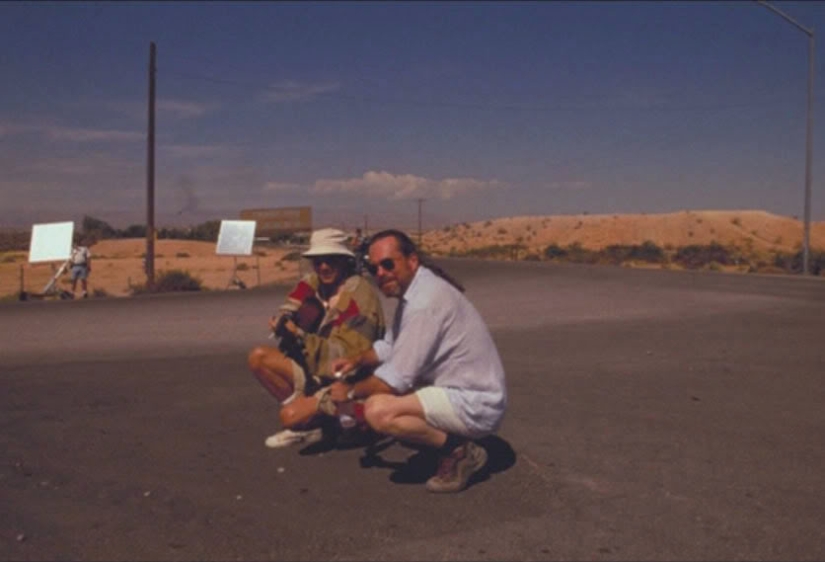
In General, the pre-production of the film Gilliam describes it as "a nightmare". For a long time everything was done exclusively on verbal agreements, and the producers threatened with removal from the project and tried to reduce the budget, although as training it became apparent that the costs need to be increased. In the end, the budget has increased from seven million dollars to nineteen. The shooting was allocated forty-eight days, however, the group took fifty-six days from August to October 1997. Gilliam, known for the ability to work quickly, within two or three takes, but notes that this place had "very pragmatic". Forced pace of filming, he was subsequently described as: "he who hesitates is lost. No reshoots, no refunds to the filmed scenes. Gonzo-direction, become kantarovski gonzo journalism".
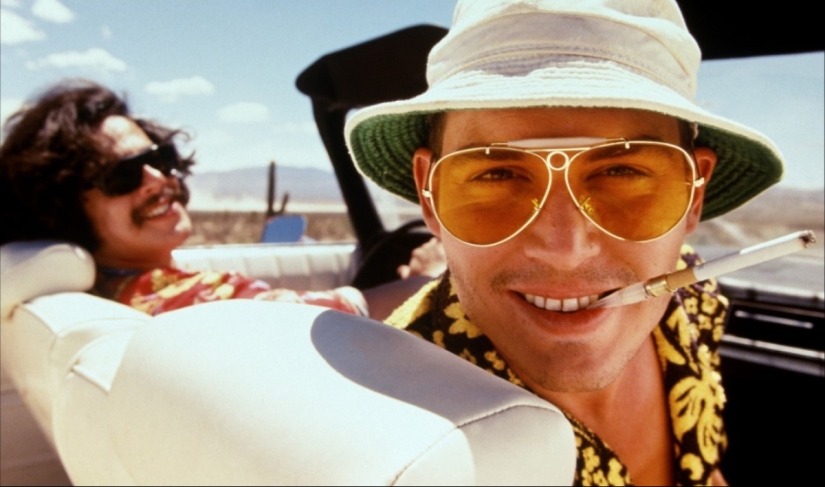
Even when the film was listed as Cox, the tape was joined by actors johnny Depp and Benicio del Toro. Both treated preparation very seriously. Del Toro had to play Dr. gonzo, the prototype of which was attorney and friend of Thompson and Oscar Zeta Acosta. To translate the image, the actor studied in detail the biography Acosta, and in just nine weeks scored an impressive eighteen pounds.
Depp played journalist Raoul Duke, alter ego of Thompson and to the actor, "to steal his soul", four months, he lived together with the writer, exploring nature, habits, gait, tone your hero. A particular challenge was the imitation of specific voices Thompson.
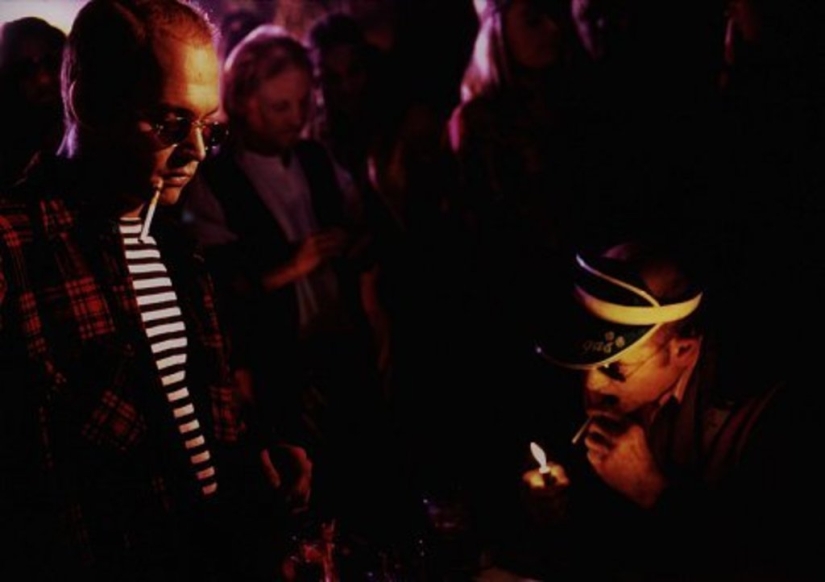
To do this, Depp has used the technique, borrowed from Marlon Brando (he had just "Fear and hatred" was filmed in the Director's debut movie "the Brave one"), known for its phenomenal inability to remember lines. The actor was in the headphones, which sounded a necessary pre-recorded text.
With such scrupulous regard for the role, Thompson eventually even admitted that he sees in the image of Duke no one except Depp. And in a sign of special respect Thompson even personally bald shaved the actor before filming.
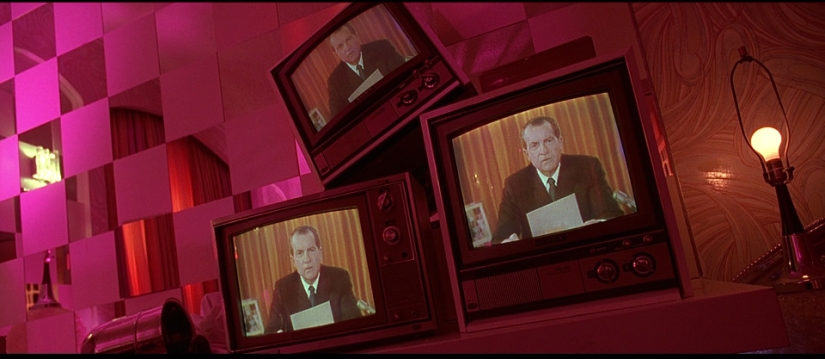
The action of the book and the movie is almost entirely takes place in Las Vegas, but for some reason only part of the shooting managed to hold in the same places described by Thompson.
The first problem is the entertainment capital of a quarter of a century much has changed. It tells Gilliam: "Vegas with only one quarter, which is still something like the Vegas of the seventies: there was an old motels and old signs. This is the street of North Fremont, it is located on the outskirts of Las Vegas".
However, for most of the hotels and casinos that were approached for the film, the group refused to allow even close, apparently understanding in light of what the life in Las Vegas will appear on the screen. To open its doors only agreed hotels and casino Stardust, The Rivera. However, they severely restricted the work of the team at the time, allowing you to remove only in the short period between the two nights and six in the morning.
A significant part of the interiors had to be built in the halls of Warner Bros, including one of the most insane premises of the film casino Bazooka Circus, which guess a real casino Circus Circus. The overall design of the space suggested the actual interiors of casino-hotels — their authors are not greatly exaggerated. For example, the carpet patterns plant forms and toxic coloring Gilliam was observed in all of entertainment during one of his visits to Las Vegas in the 1960s.
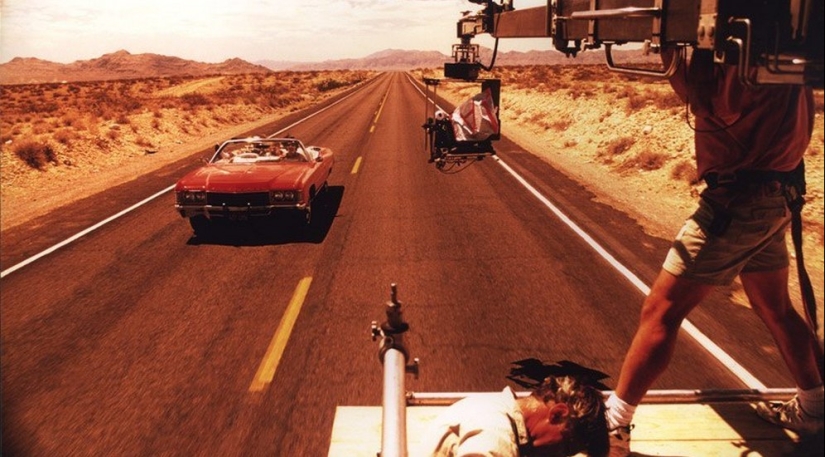
In addition to Las Vegas, a few scenes were filmed in California, in the desert regions of Arizona and Nevada and canyon Red Rock. Speaking about the most difficult episodes, Gilliam highlights of the scene on the roads and in the wilderness, they were particularly expensive, time-consuming and physically unpleasant because of the constantly hanging in the air of dust and sand. The latter circumstance is deliberately designed with the help of wind turbines.
Johnny Depp in interview celebrates the originality of this idea: "It was very unusual, the idea is to let the tons of sand to score your throat, and even for many miles around. It's easy: you only think about how to cover your mouth because your lungs are completely filled with this horrible dust."
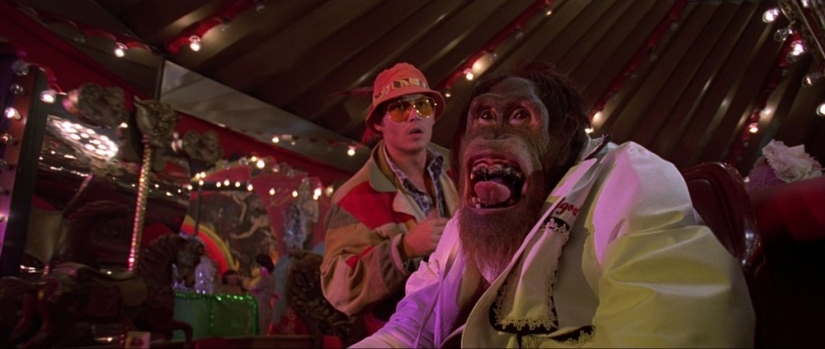
The cinematographer of the film was made by Nikola Pecorini that took over the shoulders of only one meter, but have worked for many years the second chamber from Vittorio Storaro, and with rich experience of steadicams. He literally asked Gilliam to the group. The Director has surrendered under the pressure of his enthusiasm, though, and continued even after the shooting be surprised that Pecorini only one eye. The collaboration was so successful that in the future Pecorini became a frequent collaborator Gilliam (fresh film "the Man who killed don Quixote" is filmed it).
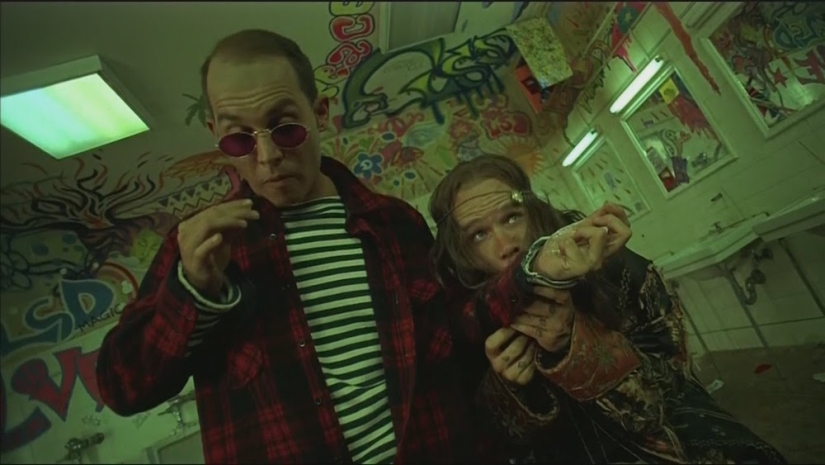
In "Fear and hatred in Las Vegas" might Gilliam most clearly uses a number of its distinctive visual techniques. First of all, this wide-angle lenses (mostly 14 mm and 16 mm), deforming the objects and the space in the frame and words Gilliam, "giving a sense of the General atmosphere" and "worrying". Another characteristic of the decision — Dutch angle, causing a feeling of strangeness, of discomfort and disorientation.
Moreover, Gilliam found this feature of the solution in the film: "We frequently use this technique in the first part of the film, which begins when the horror, as we align the horizon, it desorientiert even more." The combination of the use of wide-angle optics and a Dutch angle, according to the Director, allowed to pass effect "drug trip".
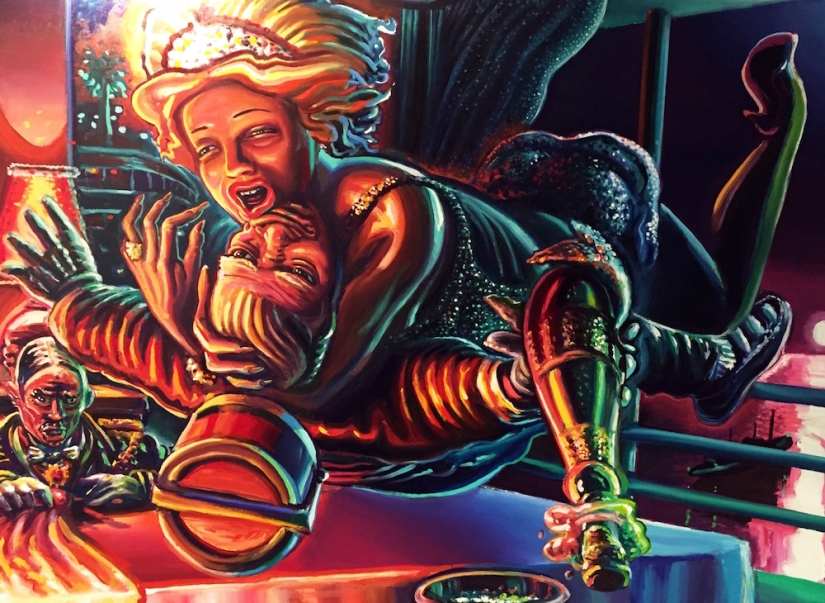
A key visual reference pictures authors call paintings by American artist Robert Arber. Gilliam, reflecting on the influence of his work, describes them thus: "Fluorescent neon colors on a black background, a strange ghostly events, and they all happen in hotel rooms".
Thompson's book was published with illustrations by Ralph Steadman, which in the minds of the masses already existed a visual interpretation of the work. Gilliam initially thought to develop established Canon on screen, but soon realized that the idea is impossible: "Despite the fact that the illustrations perfectly convey the crazy energy of the book, I understood that we will not be able to take and literally translate them into the language of cinema, turning it into a three-dimensional image. So I tried not to pay attention to them". However, some of the images reproduced in the film almost literally, for example, the image of the hitchhiker.
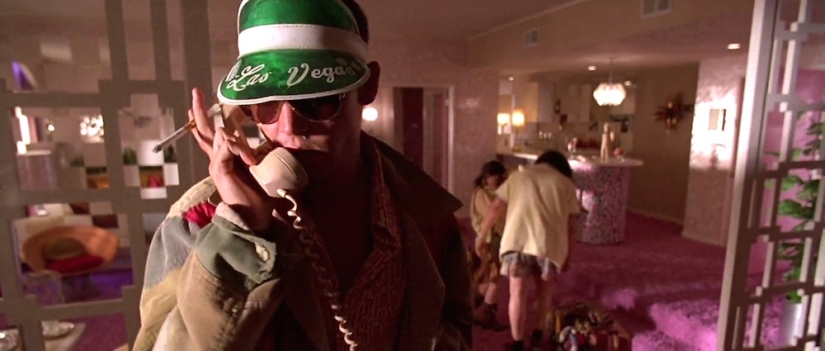
Despite the rapid preparation and style of "gonzo-directing", the picture is carefully thought over in detail. For example, Gilliam said the value of the costumes: "the Costumes came to symbolize everything that was happening in America at that time, none of the political and social movement was not left without attention. We spent countless hours discussing the political meaning of colors and textures". As example, Congress district prosecutors where all dressed in red, white and blue, i.e. the colors of the American flag.
But often the color of the frame is not as much symbolic as it is emotional charge. For example, for the rooms of the Mint used a radical combination of purple and green colors chosen to create a feeling of anxiety and discomfort. In General, for each institution, the authors have thought this through its more and more uncomfortable, color solution, thus emphasizing the key idea: "Every new casino, which come in heroes, turning into the next circle of hell."
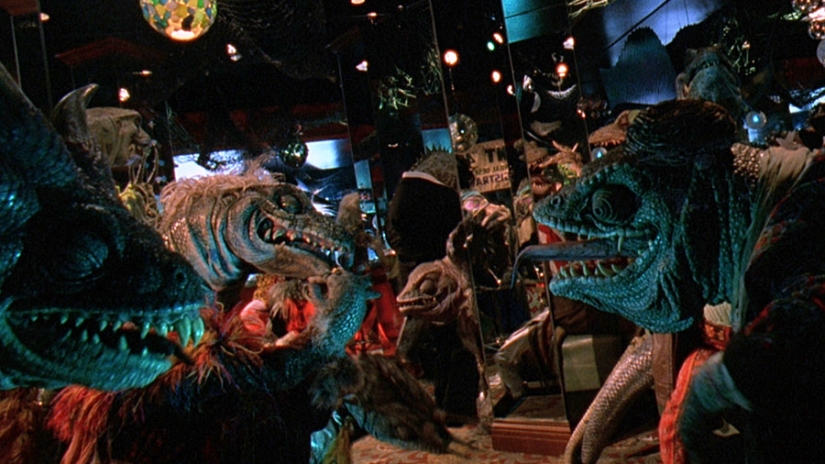
One of the most visually stunning film images — reptiles in a hotel lobby, which see the main characters under the influence of acid. Originally Gilliam wanted to "creature" looked as if written by Francis bacon. However, this solution was too expensive and time consuming. For filming, it was necessary more than twenty costumes-the heads of lizards, but the budget was only enough for seven. Therefore, to create a sense of mass of the group had to Dodge on the set used a system of mirrors, but in different frames appeared the same head, just in different costumes.
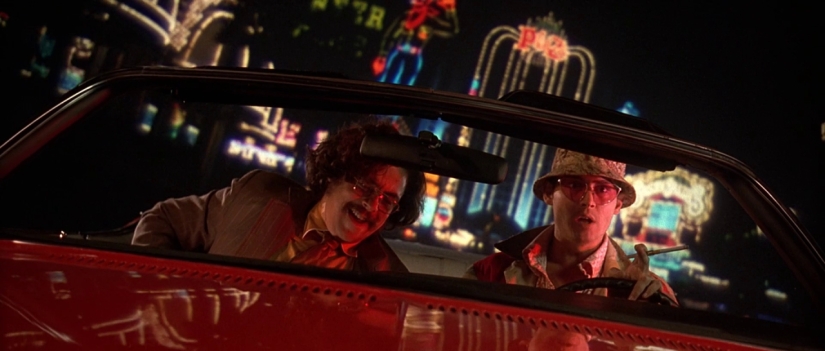
Special retro charm of the film gives some road scenes keying. Interestingly, the heel is projected not specially filmed footage, and excerpts from television shows 1970-80‑ies of "VEGA$".
The source hunter S. Thompson gives clear instructions about the music, and Gilliam's sometimes been a problem. For example, the "hymn books" is a song of The Rolling Stones "Sympathy for the Devil", but to use this song in the movie was not possible. First, she doesn't fit the rhythm, and, secondly, cost half the budget of musical paintings. In the end, her place was the track "Combination of the Two" Janis Joplin and Big Brother and the Holding Company.
However The Rolling Stones on the soundtrack managed to get in the movie is another hit group of "Jumping Jack Flash". As a whole the arrangement is built on classic rock and psychedelic 1960-70‑ies, including the music of The Yardbirds, Jefferson Airplane, The Youngbloods.
In addition, Gilliam decided to apply to the musicians whose careers had something to do with Las Vegas. So the soundtrack is added Tom Jones and Debbie Reynolds. Gilliam noted that the choice of songs was influenced by this principle: "the more wild the circumstances become, the more convincing sound comforting song."
It was not intended that the film be more than five or six songs from other artists. Complete the music for the film was supposed to write ray Cooper. In the process, the concept has changed and Cooper has created for the film only a few unusual sketches. Their singularity was that the musician has put with each other a few tunes and added Japanese guitarist Tomoyasu Hotei, which, according to Gilliam, "ingeniously faked" Jimmy Hendrix. Such an eclectic soundtrack is consistent with not only the chaotic atmosphere of the film, but the plot motifs unrestrained mixing of all possible drugs. Perhaps the best example is the famous scene from "white rabbit".
Keywords: Las Vegas | Shooting | Addiction | Movie | Film set | Behind the scenes
Post News ArticleRecent articles

There is never enough space in a child's room. You know, you need a bed, the closet is literally bursting with things, and you ...

Armenian artist Artush Voskanyan paints in the style of mannerism and calls the Italian painter of the XVI century Giuseppe ...
Related articles

Most women love to go shopping and shopping in boutiques. For some, shopping turns into a real addiction that you need to fight. ...

Before we start, let's get this straight: drugs are bad. And this selection is not a reason to believe that only sobriety stands ...

When we watch our favorite Soviet comedies, heroic dramas, or tender films about love, it is difficult to imagine that behind these ...

In our days, the friendship with the ex-partners is normal, civilized and progressive. In this article we are told in journals and ...